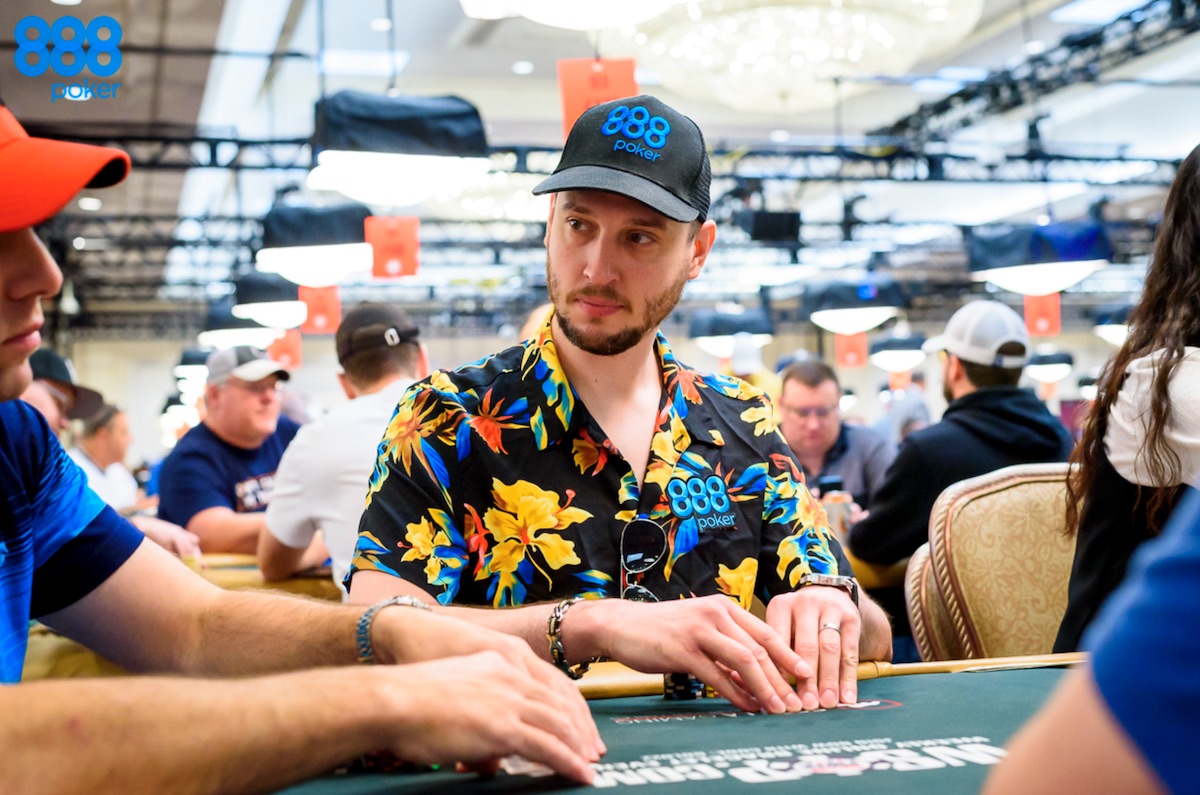Editor’s note: This is Lesson #5 in our weekly “Strategy with Stas” series. Each and every Sunday Stas Tishkevich, founder of the Poker Fighter Training App, brings you a new lesson in article + video format. We hope you enjoy this feature from the Poker Fighter School, and would be happy for you to share these posts — as well as your feedback — on social media.
Pre-flop
Action is folded to the player in the dealer position, who open raises the pot. Most players will open-raise a wide range from this position, at least 35% of possible starting hands, and our King-Queen offsuit is ahead of this opening range, so we should usually re-raise (3-bet) our hand in this spot.
Just calling from the small-blind vs. a dealer’s open-raise is normally a losing move, as we would invite the big-blind to join the pot, and thus lose the initiative in the hand.
So we re-raise him from the small blind position with king-queen offsuit, and he calls.
Flop
The flop comes 8-2-2 rainbow. This is a dry flop, as there are no possible flush or straight draws. We have two overcards, meaning that our hand is a drawing hand and its strength is medium. So, when we raised pre-flop, we claimed that our hand is strong, and the opponent just called, meaning that he has a Capped Range.
A Capped Range in this case means that the opponent doesn’t have the best possible hands pre-flop, such as pocket aces, pocket kings, pocket queens, pocket jacks, or ace-king, while we do have these hands because we would re-raise them pre-flop.
We need to decide between checking or betting our hand.
Checking here means that we give up on the hand and fold if the dealer bets. If he checks we can try and bet the turn to take down the pot.
If we want to bet we need to find a good reason, in this case betting as a bluff and for protection.
Betting as a Bluff means that we bet expecting the opponent to fold stronger hands than ours, such as an ace high, and vs. opponents who fold too much, even pocket pairs such as pocket threes up until pocket sevens.
Betting for Protection means that we want to take down the pot now and look for a fold from hands that can still improve to a better hand than ours if we check the flop, such as suited connectors (76s for example) or broadway combos (QJo for example).
So our best line here would be to bet the flop. If the opponent calls, usually we will give up the hand on the turn unless we improve.
We can improve to a made hand — hitting a king or a queen — and then we have a medium made hand that we can check and call on the turn or bet again for thin value.
We can probably bluff again on scare cards on the turn – an ace or jack – because that would be a card that strongly hits our range of hands that we would’ve re-raised pre-flop and bet the flop.
Summary
The main point we need to understand here on the flop, is that although we missed the flop, betting will lose less than checking and giving up on the hand. We have the initiative and our range is un-capped, while the opponent suffers from lack of initiative and his range is capped. We need to bet because we can make the opponent fold stronger hands. We still have decent chances to improve if he calls, and we need to make the pot bigger when we’re going to hit our outs.







Comments